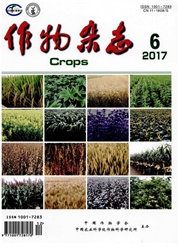

 中文摘要:
中文摘要:
两种养麦(甜荞和苦荞)栽培在不同紫外线B(UV-B)辐射[减弱(-UVB)、近充足(NA,Near—abient)、增强(+UVB)]保护小区内,以研究当前和未来增强UV.B辐射对其生长、发育、产量、生物量和卢丁含量等的影响。结果表明,不仅未来增强UV—B辐射而且当前高原条件下的UV-B辐射显著抑制了荞麦的生长、降低了产量和生物量积累,但促进了荞麦发育使其开花期提前。另一方面,叶片卢丁和UV吸收化合物在NA和增强UV—B辐射下显著增加,而多酚氧化酶在UV-B辐射下大幅度提高。两种栽培荞麦对UV-B辐射非常敏感,在高紫外辐射地区或未来增强UV-B辐射条件下荞麦生产除应考虑到高产外,还应该考虑到荞麦对紫外线辐射的耐性。
 英文摘要:
英文摘要:
The common and tartary buckwheat were grown in the sheltered field plots under reduced, near-ambient and supplemental uhraviolet-B radiation (UV-B ,280 -315 nm). Effects of different UV-B treatments on crop growth, development, rutin content, UV-absorbing compound, peroxidase activity, seed yield and biomass accumulation were determined. The prevailing and increasing UV-B radiation caused negative effect on plant growth, total biomass, final seed yield in both buckwheats, while crop development was promoted by enhanced UV-B radiation. Leaf turin concentration and UV-B absorbing compound were generally increased by UV-B. The results showed that common and tartary buckwheats were potentially UV-B sensitive species, and UV-B tolerance should be considered while introducing and promoting new buckwheat euhivars in the high-ambient UV-B region besides considering the high-yield potential.
 同期刊论文项目
同期刊论文项目
 同项目期刊论文
同项目期刊论文
 期刊信息
期刊信息
